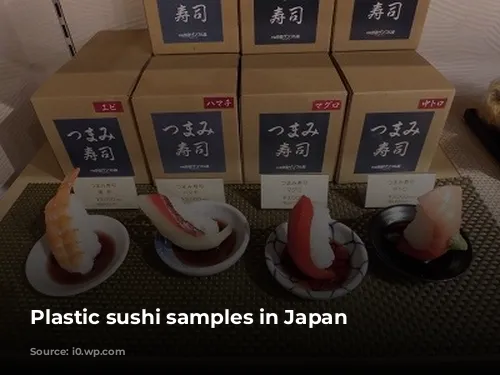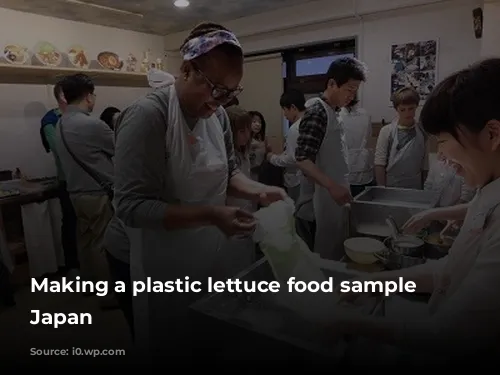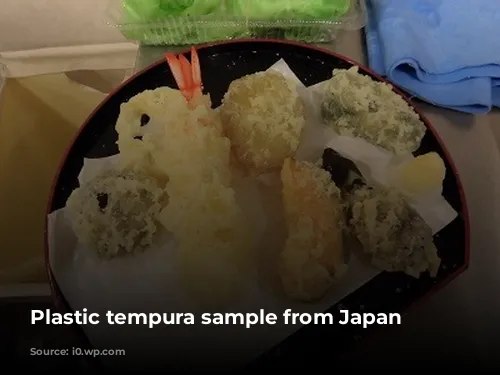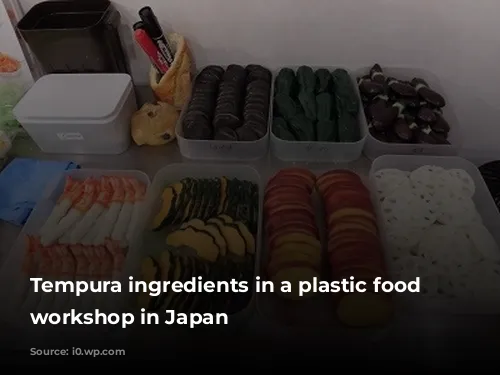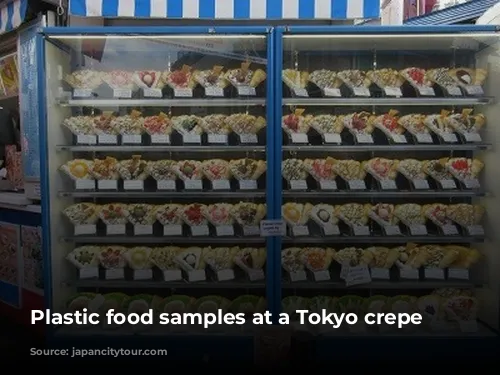Have you ever walked by a restaurant and been tempted by the mouthwatering displays of food in the window? In Japan, this culinary experience is a unique cultural phenomenon. Instead of real food, elaborate plastic replicas known as “food samples” entice passersby. These miniature masterpieces showcase the restaurant’s menu, making it easy for customers to choose their meal before even stepping inside.
A Window to Japanese Cuisine
The practice of using food samples began in Japan to help local customers make informed decisions. However, it has become a valuable asset for international travelers as well. Even if the menu is in English, the samples provide a clear visual representation of what to expect. It’s a handy way to avoid misunderstandings when ordering, especially for those who may not be familiar with Japanese cuisine.
A Century of Food Samples: From Wax to Resin
The history of food samples dates back nearly a century, beginning with the Shirokiya Department Store in 1923. This innovative store was the first to feature restaurants on its premises, offering a unique dining experience. Initially, they used real food for displays, but it quickly lost its freshness and appeal. Enter Mr. Sudo, a pioneer in the field, who initially crafted human figures for scientists. He saw an opportunity in food samples and began creating them from wax and oil paint.
The popularity of food samples skyrocketed in 1932 when Mr. Iwasaki established a company dedicated to their production in Osaka. These samples spread throughout Japan, becoming an integral part of the dining experience. However, when World War II broke out, the military’s control over paraffin, a key ingredient in the wax, threatened the industry. Mr. Iwasaki returned to his hometown, determined to find a solution. Through tireless research, he successfully created samples without paraffin, ensuring their survival and availability during this challenging time.
Evolution of Food Samples: A Leap Forward with Synthetic Resin
The 1970s ushered in a new era for food samples with the development of synthetic resin. This groundbreaking material addressed the problems of wax degradation and color fading, while also offering increased durability and ease of transportation. This breakthrough cemented the popularity of food samples, turning them into a treasured part of Japan’s culinary culture.
Food Samples: A Unique Souvenir and Culinary Experience
Today, food samples are highly sought-after souvenirs for tourists visiting Japan. Many are amazed by their realism, often reaching out to touch them to confirm their plastic nature.
For those looking to immerse themselves in this unique aspect of Japanese culture, several dedicated food sample shops exist. In Tokyo, Kappabashi, known as “Kitchen Street,” offers a wide array of food samples alongside culinary equipment, tableware, and even restaurant furniture.
If you find yourself in Osaka, Sennichimae-Doguyasuji offers a similar experience, featuring a diverse collection of food samples and other culinary essentials.
Beyond these dedicated streets, many souvenir shops in popular tourist destinations such as Asakusa and Tokyo Skytree also carry these charming replicas.
A Hands-On Experience: Making Your Own Food Sample
If you’re feeling adventurous, you can even try your hand at making your own food sample! Iwasaki, the leading food sample company, offers workshops at their Sample Village Iwasaki in Gujohachiman, Gifu Prefecture. This impressive facility showcases an extensive collection of samples and features a large workshop where visitors can learn the art of food sample creation. For those in Tokyo, a smaller workshop is located on the second floor of the Ganso Sample-Ya (Original Sample Shop) in Kappabashi.
These workshops provide participants with a unique hands-on experience, guiding them through the process of transforming raw materials into realistic replicas. With the guidance of experienced instructors, you can choose from a variety of food items, including lettuce, tempura, ice cream, and noodles. Each step of the process is fascinating, revealing the secrets behind the creation of these miniature masterpieces.
For example, making a lettuce sample involves melting green and white wax in warm water and carefully shaping them into a realistic representation of the leafy vegetable. This immersive experience is not only educational but also incredibly fun, offering a chance to create a unique and personalized souvenir.
Discover Japan: A Culinary Adventure Awaits
Japan’s food samples are a testament to the country’s attention to detail and passion for culinary artistry. They offer a glimpse into the vibrant and captivating world of Japanese food culture. Whether you’re browsing through shops filled with colorful replicas or creating your own food sample, the experience is sure to leave a lasting impression.
Plan your trip to Japan today and embark on a culinary adventure that will tantalize your senses and create memories to cherish for a lifetime!
